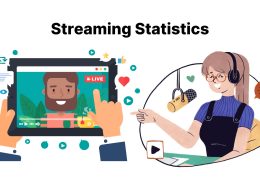Introduction
Just a few years ago, talking to a computer felt like science fiction. Today, language models like ChatGPT power chatbots, write emails, and even help draft code. From its debut in late 2022, ChatGPT sparked global interest, ushering in a new era where AI understands and generates human-like text. Now, these AI language models appear in search engines, customer support tools, and creative apps—showing the explosive rise of language models across every corner of our lives.
1. A Brief History of Language Models
1.1 Early Beginnings
- Rule-Based Systems: In the 1960s and ’70s, chatbots like ELIZA followed hand-crafted rules to mimic conversation.
- Statistical Models: By the 1990s, researchers used statistics on word sequences (n-grams) to predict text, improving translation and speech recognition.
1.2 The Deep Learning Revolution
- RNNs and LSTMs (2010s): Recurrent neural networks learned long-range patterns in text, powering early AI writers.
- Transformers (2017): The Transformer architecture, introduced by Vaswani et al., enabled models to process entire text passages at once. This breakthrough led directly to models like BERT and GPT.
2. The Birth of GPT and ChatGPT
2.1 GPT Foundations
- GPT-1 (2018): OpenAI released the first Generative Pretrained Transformer (GPT). With 117 million parameters, it showed the promise of unsupervised pretraining on large text corpora.
- GPT-2 (2019): Scaling up to 1.5 billion parameters, GPT-2 generated coherent paragraphs and sparked debate over AI’s capabilities.
2.2 GPT-3 and the Leap Forward
- GPT-3 (2020): With 175 billion parameters, GPT-3 achieved human-like fluency. It could write essays, answer questions, and mimic styles on demand.
2.3 Launch of ChatGPT
- ChatGPT (2022): Optimized for dialogue, this model allowed anyone to chat with AI in real time. Its ease of use and quality output led to over a million users in days, cementing AI’s place in mainstream tech.
3. How Modern Language Models Work
3.1 Pretraining on Massive Data
Models consume vast amounts of text from books, websites, and articles. Through a method called “self-supervised learning,” they predict missing words in sentences, building a statistical map of language patterns.
3.2 Fine-Tuning for Specific Tasks
After pretraining, developers fine-tune models on targeted datasets—legal documents, medical texts, or customer support transcripts—to improve accuracy in those domains.
3.3 Inference and Prompting
Users type a “prompt,” and the model generates text based on probabilities learned during training. Engineers craft prompts carefully to guide the model toward desired outputs.
4. Beyond Chat: Language Models Everywhere
4.1 Search Engines
- AI-Assisted Queries: Google’s AI-driven “Search Generative Experience” provides direct answers rather than just links.
4.2 Content Creation Tools
- Writing Assistants: Jasper, Copy.ai, and Microsoft Copilot help bloggers and marketers draft headlines, articles, and social posts.
4.3 Customer Support
- Chatbots: Companies deploy AI chatbots to field routine inquiries, reducing wait times and freeing agents for complex issues.
4.4 Coding and Development
- AI Pair Programmers: GitHub Copilot suggests code snippets in real time, speeding up software development.
4.5 Education and Tutoring
- Personal Tutors: Platforms integrate AI to explain math problems, correct essays, and provide language practice at any hour.
4.6 Creative Arts
- Poetry & Music: AI co-writers collaborate on poems and song lyrics, sparking new creative possibilities.
5. Business Benefits and Use Cases
5.1 Efficiency Gains
- Document Drafting: Automate reports, emails, and contracts in seconds.
- Data Analysis Summaries: AI distills complex datasets into clear, actionable insights.
5.2 Cost Savings
- Reduced Labor: Companies handle more volume without hiring extra staff.
- 24/7 Availability: AI never sleeps, ensuring customer support around the clock.
5.3 Enhanced Personalization
- Targeted Marketing: AI crafts individualized messages based on user profiles and behavior.
- Dynamic Content: Websites serve AI-generated headlines and product descriptions tailored to visitor interests.
6. Ethical Considerations and Challenges
6.1 Bias and Fairness
Language models can reflect societal biases present in training data. Developers must audit and mitigate biased outputs to ensure fair, inclusive applications.
6.2 Misinformation
AI’s fluency makes it easy to generate convincing yet false content. Combating disinformation requires watermarking AI text and using detection tools.
6.3 Job Displacement
Automation of writing and coding tasks raises concerns about workforce impact. Reskilling and focusing on uniquely human skills—strategy, empathy, and creativity—become critical.
6.4 Privacy and Security
Large-scale data use can risk personal information. Strict data governance and transparent policies protect user privacy.
7. Future Trends in Language Models
7.1 Multimodal AI
Combining text with images, audio, and video, models like GPT-4 and DALL·E demonstrate cross-modal understanding—e.g., generating descriptions from photos or vice versa.
7.2 Smaller, Specialized Models
To reduce costs and carbon footprint, researchers build compact models tuned for specific tasks, running efficiently on edge devices or in browsers.
7.3 Human–AI Collaboration
Future tools will emphasize seamless teamwork: AI suggests ideas, humans refine them, and AI adapts—creating a synergy that boosts productivity and innovation.
7.4 Regulation and Standards
Governments and industry bodies are drafting guidelines to ensure safe, ethical AI deployment, shaping future development and adoption.
8. Getting Started with AI Language Models
8.1 For Individuals
- Experiment with Free Tools: Try ChatGPT, Google Bard, or Bing AI to learn prompting basics.
- Learn Prompt Engineering: Online courses teach how to craft effective prompts for better outputs.
- Build Simple Projects: Use APIs to integrate AI into personal websites, chatbots, or writing workflows.
8.2 For Businesses
- Identify Use Cases: Map tasks that involve repetitive writing, data summarization, or customer interactions.
- Pilot Projects: Start small—test AI assistants in one department before scaling up.
- Train Staff: Offer workshops on AI literacy and best practices to ensure smooth adoption.
- Measure ROI: Track metrics like time saved, increased engagement, and cost reductions to justify investment.
Conclusion
The story of AI language models—from early rule-based systems to today’s ChatGPT and beyond—shows a remarkable journey of innovation. These powerful tools now power search engines, writing assistants, chatbots, and code helpers, transforming industries and daily life. While ethical challenges around bias, misinformation, and job displacement remain, the potential benefits—efficiency, personalization, and creative collaboration—are immense. As models grow smarter and more accessible, businesses and individuals alike can harness AI to save time, boost creativity, and tackle complex problems. The rise of language models is still unfolding, but one thing is clear: the future of human–computer interaction is more fluent, intuitive, and collaborative than ever before.










